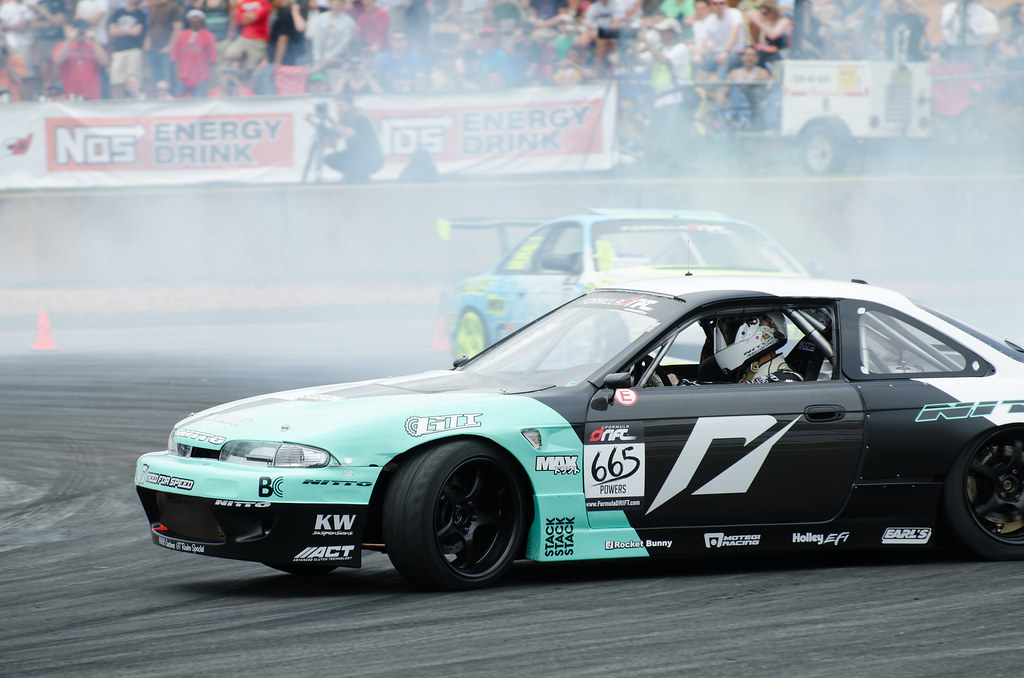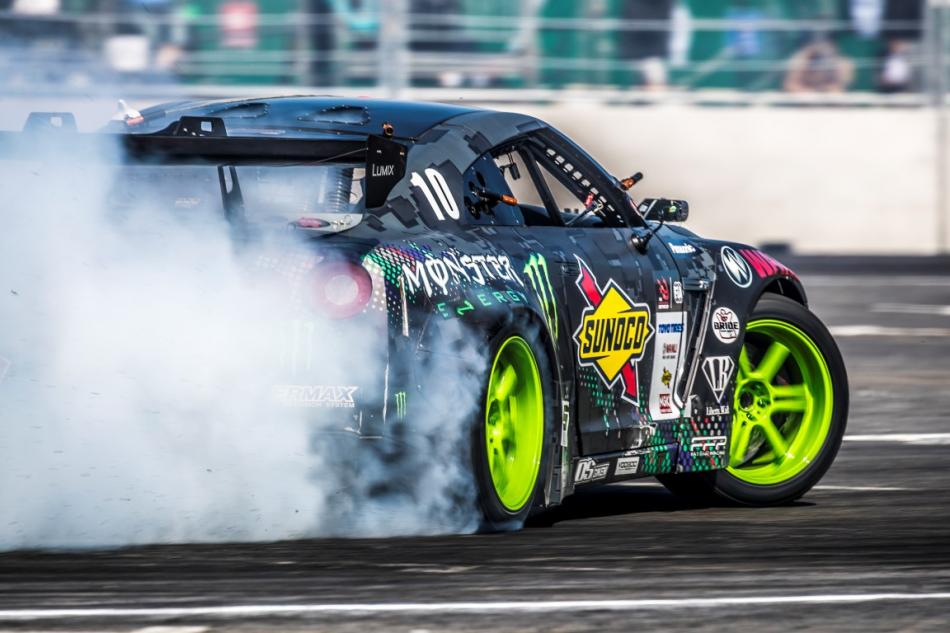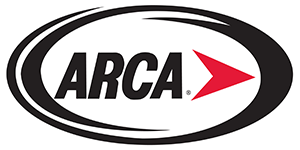Brakes
Stopping and slowing your car under any condition- that seems important for drifting, right? Indeed, your brakes will take a blow whenever drifting is involved. Start by upgrading your brakes so that they’re flawless, and install brake pads that are specific to racing or fast road driving.
Change your brake fluid, or exchange it for synthetic brake fluid if you haven’t already. Motul 600 and Ford 550 are popular choices among drifters.
If you want an even smoother braking setup, consider upgrading the size of the brake disks. Larger disks are blank, drilled, slotted or dimpled. Each has their own benefits:
Blank: Most surface area, easy on brake pads, most affordable, resist cracking. Drilled: Drilled holes make it easier for gas build-up to be expelled, lighter rotating mass.
Slotted: Similar to drilled, but more affordable and less prone to cracking. Dimpled: Mostly cosmetic, otherwise similar to slotted.
Slotted rotors are exceptional for any street-based car. Combined with composite brake pads, slotted brake disks offer improved fade resistance for reliable, stress-free braking.
Suspension
You need the best possible control while drifting, so a good set of coilovers is worth the investment. A’PEXi and TEIN coilovers are often found in the most popular drift cars. As for spring rate, you want a good balance without stiffness. Drift cars should be tuned so that they’re slightly stiffer than street coilover spring rates, but not as stiff as a race car.
Ideally, you want a suspension that’s easy to modify on your own, since every driver has their own preference when it comes to control and handling. Coilovers allow you to adjust the dampers easily, so you can dial in the best drift course setting on the track, then revert to a softer setting for the drive home.
Finally, avoid lowering your car below two inches. Yeah, your car may not look as cool, but drift suspension isn’t meant to work at low angles, and this will lead to poor performance.
Steering
When it comes to steering, you want to get the most angle from your steering rack so that the car can get completely sideways. Obviously, there are some limits here—wheel well clearance and binding between the suspension arms, for instance. Most drifters can extract a suitable angle by installing tie rod end spacers.
Handbrake
Ah yes, your magical drift wand, the handbrake. The handbrake is your drifting companion and should be upgraded to serve you under the most extreme conditions. It needs to be durable enough to handle the rigours of drifting. Ensure there’s no slack in the handbrake cable, and replace it immediately if it’s even slightly stretched or worn.
When you pull the handbrake, you should feel your rear pads gripping firmly. If not, make sure you beef up your brakes with fresh pads.
Body Work
Crashes are inevitable, and your car will collide with barriers and vehicles at some point or another. More often than not, drifters secure their bumpers with cable ties. This prevents the bumper from suffering irreplaceable damage in the event of a collision, as the bumper will simply break free from the cable ties, allowing you to tie it back on later.
Tyres
You’ll become quite familiar with swapping worn tyres for a fresh pair. Drifting burns through rear tyres quickly, resulting in multiple fresh tyres being used. While this might seem expensive at first, for the most part, you can use budget rear tyres and reserve slightly higher-end wheels for your front tyres, which won’t wear out nearly as frequently.
Safety
Your safety is a crucial component to your success as a drift car driver! This includes a good helmet, a fire extinguisher and a roll cage.
For head protection, any racing helmet will do. Most venues require a helmet, and sometimes a motorbike helmet will work fine. You don’t want your noggin colliding with the roll cage all the time.
Other safety items to check and include: Battery is fastened securely Battery master switch is recommended Front tyres are roadworthy Fitted fire extinguisher Oil and radiator catch tanks All lights, brake lights and indicators must be in good working condition
Seating
When it comes to seats, size does matter. You’re going to be spending a lot of time strapped into your seat, skillfully sliding around corners and changing directions on the fly. What you don’t want to worry about is rocking back and forth in your seat, clutching the steering wheel to keep you stabilised. As soon as you can, swap out the driver’s seat for a fixed-back racing seat and harness.








